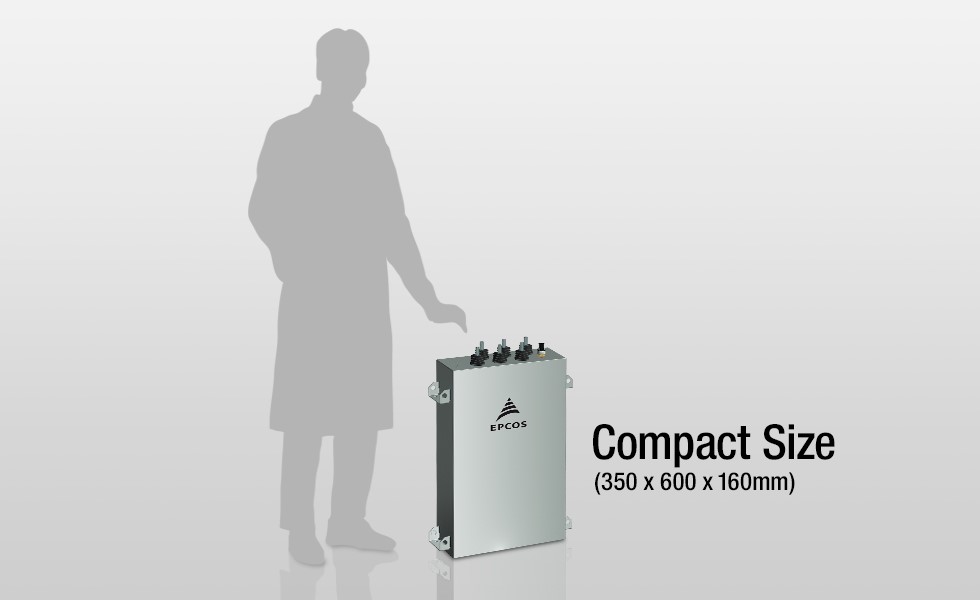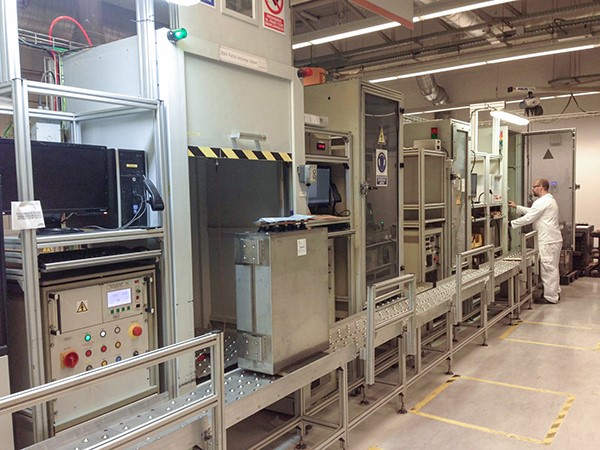By Eduardo Drehmer, TDK, director of marketing, Film Capacitors and Power Quality Solutions
All life depends upon energy from the sun to exist. Directly or indirectly, the sun is the source of all energy on our planet in the form of fire, water, and wind. Because of the Industrial Revolution, the energy that humankind relies on to survive has exponentially grown over the past two centuries.
In recent years, coal (fire), water mills (water), and windmills (wind) have given way to nuclear fission (fire), hydroelectric dams (water), and offshore wind farms (wind) as the main drivers of energy. The latter two are renewable energy resources that are not only better for the environment due to creating few emissions but critical for a nation’s economic, political, and security goals.
As humankind looks to more efficiently create power, reduce energy consumption, and limit its impact on the environment, the need for moving it from remote solar plants and offshore wind parks to the consumers who need it becomes a significant issue. This is because the power losses that occur over long-distance transmission can be substantial. To solve this challenge, design engineers are increasingly adopting new power capacitor technologies for high-voltage direct-current (HVDC) systems to enable stable voltage and minimized losses for long-distance transmission.

Power capacitors are used to smooth voltage in the converter stations, as shown on the center of this image.
HVDC systems and power losses
To understand the magnitude of this problem, it is important to understand the anticipated growth of HVDC systems. HVDC is an energy infrastructure technology designed for the transmission of electricity from power plants at high voltages of 200 to 500 kV using direct current (DC) rather than alternating current (AC). The market for HVDC systems is expected to grow strongly in the next five years. Worth slightly more than $7 billion in 2018, it is projected to grow to more than $13 billion by 2025 .
Some of this growth is from the increased demand for electric power for electric vehicles and data centers. Still, most of the growth is from the need to transmit renewable energy from remote large wind farms and solar power plants that are often located long distances from those who consume the power they produce. However, significant amounts of energy are lost when power is transmitted across long distances.
To combat this, transmission system operators worldwide are increasingly adopting voltage-source converter (VSC) HVDC transmission systems, which help to minimize losses during power transmission. Transmission losses often happen when some electrical energy is lost due to the resistance of transmission lines during transmission to residential and commercial buildings. Some losses also occur in the converter stations that convert energy generated by power plants.
HVDC systems require transmission links that offer much lower losses than conventional AC transmission technologies. However, engineers are still facing one monstrous issue with HVDC transmission: voltage stability.
HVDC systems and voltage stability
HVDC converters are referred to as VSC because they provide constant DC voltage. Across longer distances, VSC HVDC systems experience substantially lower losses than AC transmission systems. Consequently, long-distance transmission of electrical energy from remote facilities via submarine cables and long-distance land links is more efficient with VSC HVDC.
The transmission technology in VSC HVDC systems is particularly ideal for remote renewable energy power stations, including offshore wind farms, because converter stations can be designed to be compact enough to fit on an offshore platform. In addition, the DC technology provides much better control than AC systems and allows the interconnection of grids with voltages that may not be synchronized. Moreover, the cable laying and installation of HVDC systems is less expensive than other technologies.
However, achieving stable voltage in HVDC systems is difficult. Voltage can become unstable during long-distance transmission of electricity. This instability can damage distribution systems, power infrastructure, transport and industrial equipment, and powered devices, as well as generate other potential problems.
The ideal way for engineers to address this problem is by employing power capacitors with high-current capability and enabling them to withstand significant voltage fluctuations and surges. Power capacitors are used to smooth voltage in the converter stations. Such power capacitors are required to be of the highest quality, durability, and reliability. Also, they often need to be compact and have high-current capability.
HVDC systems and power capacitors
Power capacitors are critical components to the converting of AC to DC, transmitting the power between HVDC converter stations and converting the DC back to AC so that electricity can be fed into the power grid.
Capacitor banks serve to stabilize the converted DC voltage in the generating converter station, where power is prepared for long-distance transport. In the receiving converter station at the end of the HVDC link, capacitor banks safeguard and ensure that the AC output voltage is stable and ready to be fed into the power grid.
As the use of renewable energy continues to grow throughout the world, advances in power capacitor technology — including flat winding technology — further contribute to efficient power transmission, lower transmission losses, and better energy savings.
For example, TDK’s flat winding technology employed in its MKK DCi-R power capacitors allows a volume fill factor of about 95% to be achieved, with a maximum capacitance exceeding 10,000 microfarads, indicating a very large ability to store electric charges. This energy density is about 10% higher than other technologies.

TDK’s MKK DCi-R power capacitors employ flat winding technology to achieve an energy density that is 10% higher than competing technology in a size as compact as 350 × 600 × 160 mm.
Flat winding technology
Flat winding technology first winds the conductive metalized foils and insulating dielectric films to form the thousands of alternating capacitor layers. The volume fill factor of a capacitor refers to how completely the case is filled with the capacitor layers. Flat winding technology then presses the cylindrical winding into a nearly rectangular shape to save space in a stainless-steel case that features very high energy density.
Accordingly, these capacitors have a very high energy density and compact dimensions that can be as small as 350 × 600 × 160 mm. This is very compact relative to their high-current capability, allowing them to be used to control voltage fluctuations in converter stations that are space-constrained, including offshore stations.

Production of power capacitors with flat winding technology for HVDC applications
Moreover, this technology allows the capacitor to be self-healing. If an overvoltage causes an electrical breakdown within a capacitor, a short-circuit is prevented because the capacitor’s insulation is restored within microseconds.
These power capacitors meet the quality, durability, and reliability requirements for HVDC systems and can have operating lifetimes of up to 40 years due to long-term stability of their temperature and other electrical characteristics.
Design engineers are increasingly adopting this and other new power capacitor technologies for HVDC projects throughout Europe, in the U.S., and in China. Power capacitors are key components in the converter stations that transform the AC current fed in at the start of every HVDC link into DC current with stable voltage for transmission across long distances. Power capacitors enable more remote and environmentally friendly renewable power generation that is more efficient with few losses.
Advertisement
Learn more about Electronic Products Magazine





